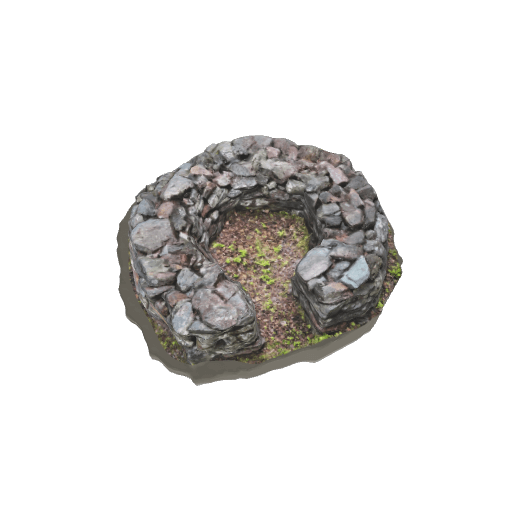Tryworks
Tryworks are furnaces used to render whale blubber into oil. Each trywork has one or more circular ovens made of large stones. A massive try-pot, or cauldron, is filled with whale blubber and placed on top of these stones.
The ovens have an opening at the base to feed the fire. To facilitate access to the tryworks, the whalers build a wooden platform with a clay-tile roof to protect them from the elements.
Although the tryworks are the central element of the whale transformation sites, they are not a gathering area for the crew. The smell of putrefaction and the risk of explosion associated with the processing of blubber into oil make it best to keep a safe distance.
References
Date: Digital replica of a 16th-century object
Origin: Digital 3D drawing
Sources:
Delmas, V. (2018). Les pêcheurs basques au Canada, 1530–1760, de la culture matérielle à l’identité culturelle [Basque whalers in Canada, 1530–1760, from material culture to cultural identity] [Unpublished doctoral dissertation]. Université de Montréal.
Pope, P. E. (n.d.). Economic activities: Basque whalers. Virtual Museum of New France. Retrieved August 15, 2022, from https://www.historymuseum.ca/virtual-museum-of-new-france/economic-activities/basque-whalers/
Turgeon, L., Auger, R., & Fitzgerald, W. (1992). Des Basques dans le Saint-Laurent [Of the Basques on the St. Lawrence]. Cap-aux-Diamants, 29, pp. .62–67. https://id.erudit.org/iderudit/8018ac
Herzog, A. (n.d.). L’âge d’or des chasseurs de baleines basques en Amérique (deuxième moitié du XVIe siècle) [The golden age of the Basque whalers in America (second half of the 16th century)]. ARCHÉOLAB.QUÉBEC. Retrieved August 22, 2022, from https://www.archeolab.quebec/familles-d-objets/basques-en-amerique-du-nord
Pointe-à-Callière, cité d’archéologie et d’histoire de Montréal. (n.d.). Tuile à toiture [Roofing tile]. ARCHÉOLAB.QUÉBEC. Retrieved August 15, 2022, from https://www.archeolab.quebec/recherche/objet/213205S5-3-%20Marmites%20de%20fonte
